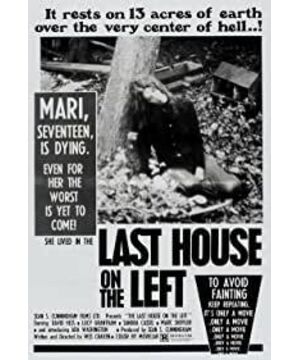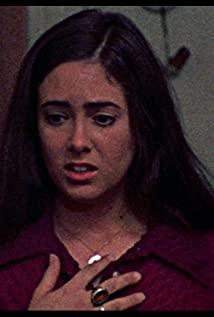Rating: 8
Keywords: banned film originator;
1. There is really a big difference between a banned film and a banned film. For example, the film became the only reason for the ban, but it appeared earlier. Ten years later, its visual scale is not even the limit level.
Probably, all success is due to running ahead of time. In the era when the film appeared, the mainland was still busy with the "Cultural Revolution", and most of the other countries in the world had not completely escaped from the shadow of World War II. Human beings still cherish peace very much, and American movies have already begun to deal with "taboo subjects." Moreover, in terms of market demand, the film market at that time did not need strong visual stimulation or story scale beyond the boundaries of conventional art and literature.
Speaking of the movie itself, one thing is worth mentioning. By the standards of that era, among all the movie indicators, the worst of the film turned out to be the performance, which shouldn't be. It is estimated that the producer really cannot find any serious actors who are willing to participate in the film. This can also be seen from the side how deviant the film was back then.
2. The era of banned movies;
Before this film, human beings have not tried to deal with the subject of "sex discrimination and sexual crimes" with films.
Previously, such stories were mostly seen in the newspapers, and people were more accustomed to examining the evils of human nature from the perspective of moral rationality. If a movie tries to deal with this subject matter, it will face many new problems.
First, the dramatic resolution of the subject of sex crimes;
How to make sex crimes, the criminal subject matter of the public's strong moral aversion, burst out of the basic drama necessary for movie stories? This is difficult, because it is not appropriate to play the evil, and it is impossible to make a story if you don't play it. This film chooses "revenge", which seems to be the only choice for the movie story to deal with similar themes. To this day, this is still the mainstream method for American films to deal with similar themes. At the same time, killing and revenge have formed a special type of film. From this point of view, the film opened a precedent for a movie with the theme of "strong moral aversion";
Second, is the blatant visualization of evil moral?
This involves a subtle problem of "visual pleasure", because to a certain extent, the visualization of evil is the amplification and promotion of evil. This problem will be the most direct reason why the film became a banned film that year. Although it now appears that these concerns are no longer a problem-now the visual scale of cinema movies is already larger than this one.
In summary, it now seems that the film is inevitably shoddy. Neither the story nor the film technology is worth mentioning. But back then, based solely on the subject matter, the film was already at a level beyond the genre of movies. Its appearance suddenly opened the door to film taboos. People have found that movies, as visual media, can also handle very publicly sensitive theatrical themes. Moreover, breaking the taboo has become a shortcut for the film industry to quickly occupy the market. What benefits from this is not only the same type itself, but more importantly, horror and erotic themes.
Therefore, the release of film language is of great historical significance, although mainstream literary critics will not be willing to accept it. But many years later, we have to admit that it opened the era of banned movies, and at the same time, it also expanded the genre and narrative space of movies invisibly.
3. The meaning of banned films;
In fact, banned films have more positive humanistic and social significance than mainstream films. At the same time, there is no ban, and the humanistic function of the film must be weakened by at least half. Because regardless of "reality themes" or "absurd drama", they are closer to real life than mainstream movies.
Technology has made the politics of this era extremely sensitive-no matter the macro national politics or the micro marriage politics. As far as the integrated film market is concerned, cinema chains have become a public opinion position for cultural rule to guard against death. In this case, the film has basically lost its value as a humanistic art. This is not only our problem, every family is like this. Entertainment is fine, love is fine, but as long as it can fluctuate to public political sentiment, any form is not acceptable, unless the politics is reasonable.
The country grasps the scale of film, half because it is industry, and half because it is culture. Therefore, the movies that the public see are all reunion plays and soap operas. That is not reality. The function of drama is not divorced from reality.
In terms of art form, as a visual medium, film originally took over the function of "Romanticism" in literature. Its moral inclination, its artistic requirements, its interesting stories, and its drama are all designed to please the weakness of human nature-the human eyes only want to see what they want to see. From this perspective, in very harsh terms, this means that the more box-office movies are, the more politically vigorous they are, and at the same time, the less humanistic meaning they are, the less they are worth watching.
We can also see this from the side. The test of the box office is often not the story art on the macro level, but the highly targeted marketing, and even the manipulation of public opinion under the monopoly of resources. The banned film, as the "surreal" or "heavy realism" in the film, unexpectedly assumes almost all the humanistic functions of the film. This is an unexpected situation in the development of film art to this day. Only by banning films can we remove political and market baggage, explore more possibilities of drama art, and complete a more profound humanistic expression.
This film is not good in the exploration of stories and dramas. As mentioned above, its significance lies in the breakthrough of themes. After this film, there have been many banned films that are undeniably possessed and possess profound humanistic value, although they are not accepted by the public aesthetics. For example, using extremely keen expressions of feminine love, subverting the "romance" of erotic themes, thinking with an extremely deep horror modality, defining the "resentment" of horror themes, writing the absurd "confusing romance" of death with musical narratives, and There are the "magic sacred infant" that criticizes reality with the meaning of classical religion, the "sewer mermaid" of heavy realism, the "visitor q" of absurd reality and so on. In this process, we found that banned films can often fundamentally change or reshape a type of subject matter from the most sensitive point. This is a very incredible role it plays in the development of film art.
There is a phenomenon worth mentioning. The places where banned films are produced are often places with relatively strong cultural freedom and vitality. In an open cultural environment, not only banned films are exported, but also strong and developed cultural tastes and industrial chains are exported. Japan, Germany, Italy, France, the United States. On the contrary, a geo-culture without any taboo subject actually means that there is no culture and freedom of speech.
Viewed vertically from time to time, many of the high-levels in our current vision were once political or cultural taboos. Journey to the West, Liao Zhai, The Red Chamber, and Jin Ping Mei, they were once taboos in written stories. In terms of its internal qualities, Jin Ping Mei, which is exposed to reality, is actually no less profound than the Dream of Red Mansions. Jin Ping Mei is the predecessor and reference of the Dream of Red Mansions-without the "vulgar" Jin Ping Mei, there would be no "high and big" Dream of Red Mansions. From this perspective, regardless of the academic environment or popular understanding, those who keep admiring the "Red Mansion", saying how advanced it is, are their very low-level performance-indecent people need arty.
Back to this film. It reminds us of the last century, the heart of a girl-Manna's memoirs. The two are very similar, and the story skills are all good. But it is all the same, opening the era of a new culture. One has enlightened the mainland's erotic expression, and the other opened the era of taboos in movies.
View more about The Last House on the Left reviews











